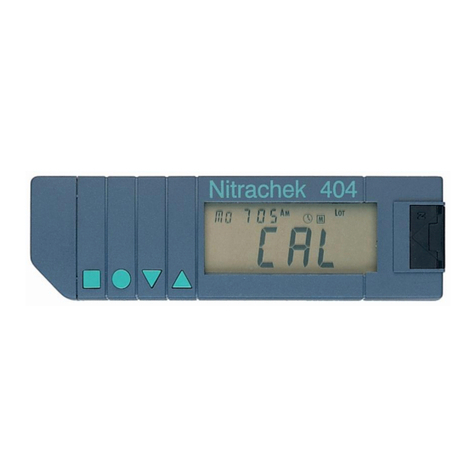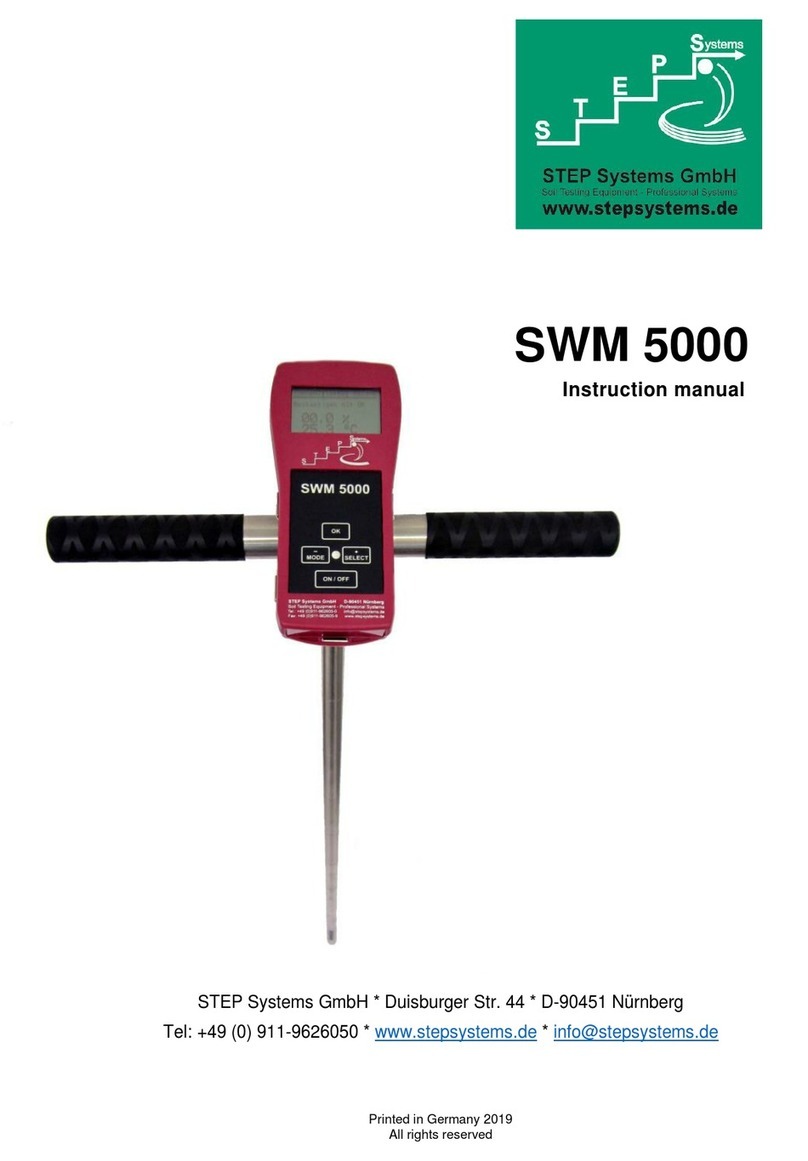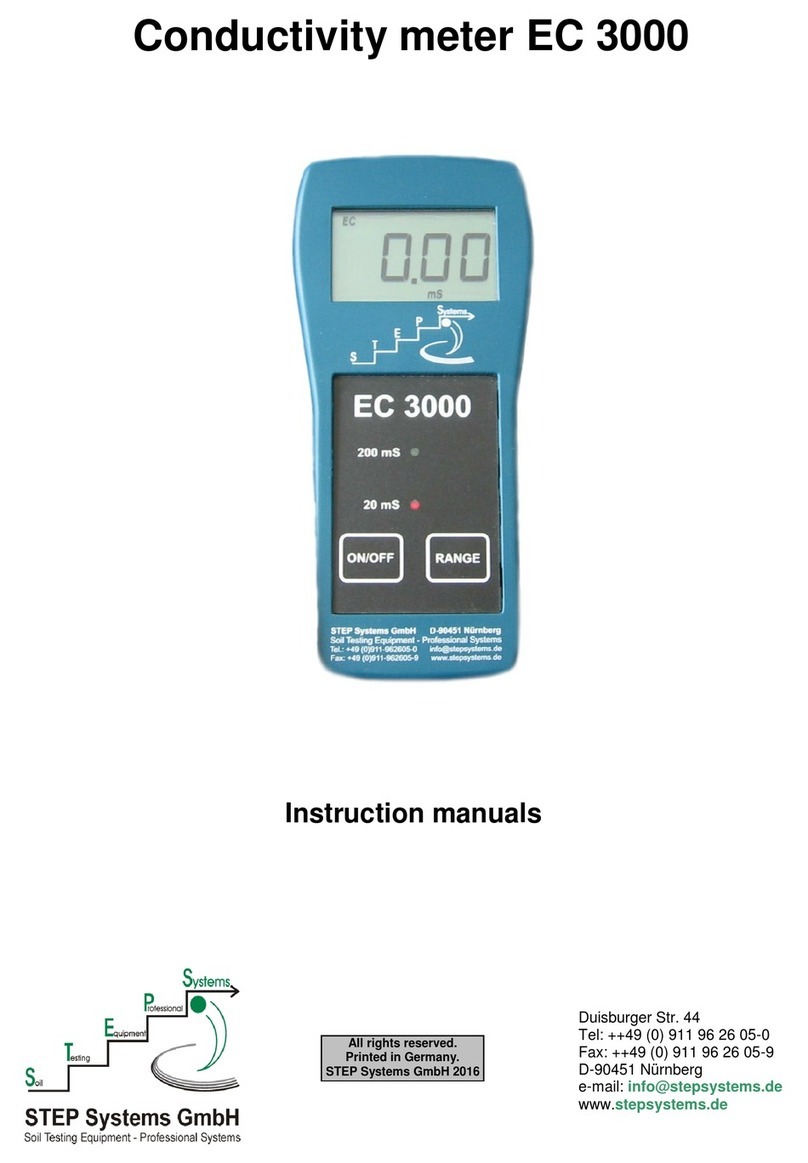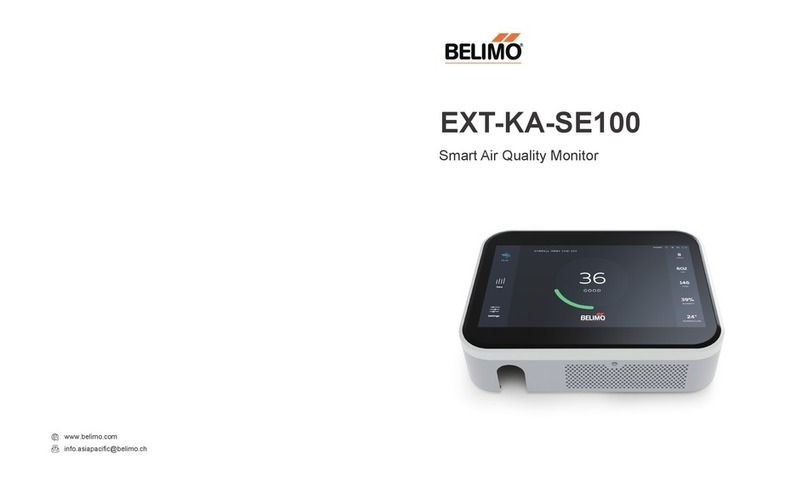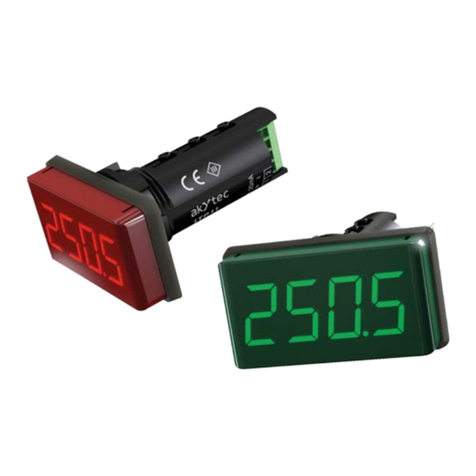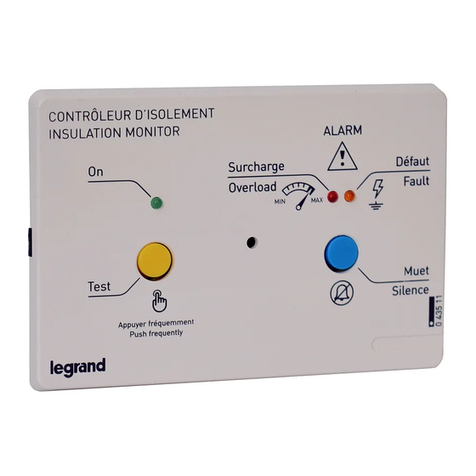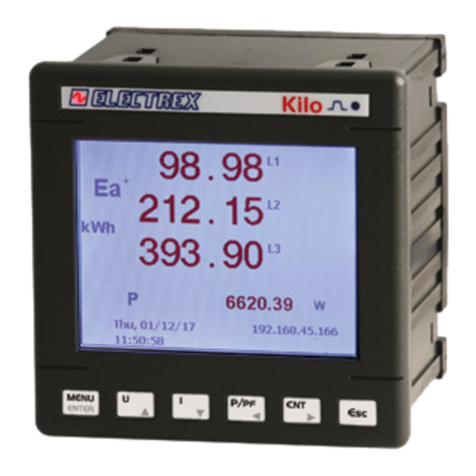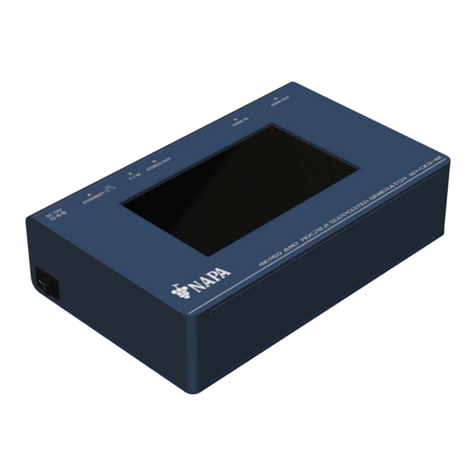STEP SYSTEMS LUX User manual

LUX Meter
Operating instructions
All rights reserved.
Printed in Germany.
STEP Systems GmbH 2016
Duisburger Str. 44
Tel: ++49 (0) 911 96 26 05-0
Fax: ++49 (0) 911 96 26 05-9
D-90451 Nürnberg
e-mail: [email protected]
www.stepsystems.de

Dear customer,
we thank you for your acquiring the Lightmeter. With this product, you acquired a state-of-the-art
device. We kindly request the user to respect this operating manual to preserve this condition and to
ensure safe operation.
Prescribed Use
The Lightmeter is a high-precision measuring instrument for the precise measuring of the illuminance
and the incidence of light on a particular area. The measurement is performed via a photoelectric cell
and the measuring result is indicated in four measuring ranges on the LC display. The voltage supply
is ensured by a 12V alkaline battery of the type A23. Do not expose the device directly to water or
humidity; the housing is not water-proof! Clean the exterior of the device only with a dry and lint-free
cloth. Do not use cleansing agents!
A use different from the one described above leads to damaging of this product. Furthermore,
it involves dangers such as e.g. short-circuit, burns, etc. The entire product must not be
opened, modified or rebuilt.
Scope of Delivery:
Digital Lightmeter with permanently installed sensor · carrying and storage case · operating manual
Safety Instructions
Any claims for guarantee will become invalid in the event of damage that results from the non-
observance of the operating manual. We do not accept responsibility for such damage. Nor do
we accept responsibility for damage to property or for personal injuries caused by improper
use or non-observance of safety instructions. Guarantees will not be accepted in any such
case.
The unauthorized conversion and/or modification of the product is inadmissible because of safety and
approval reasons (CE). This device is not a toy. Keep the device out of reach of children! Do not
expose the device to mechanical stress, to moisture or liquids. Only use the device outdoors under
appropriate weather condition or with appropriate protection. The light sensor or the device must not
be heated by the light source. Keep sufficient distance to light sources with strong heat development.
Information on the Correct Illuminance
The illuminance is measured in lux. The adaptability of the human eye is almost unlimited. This easily
leads to demanding of the eye visual performance even if the illumination is not sufficient. If there is no
light or the illumination is not sufficient, the eye can fulfill its visual performance only with great effort or
even cannot see. Very often, this involves eye injuries the number of accidents increases. With the
Digital Luxmeter you acquired a product by means of which you can verify everywhere if the
illuminance is sufficient for the normal visual performance (i.e. everyday tasks). Eyesight means the
detection of brightness and colour differences, form, motion as well as distance. Only with the correct
illuminance, the eye can fulfil its visual performance. Therefore, sufficient illumination is so important.
Concerning light, we often save at the wrong end. Dark zones give an unfriendly atmosphere. Allow
yourself more light. The kind of illumination influences the information that is transmitted by the eye to
the brain. Increase the illumination where precise seeing is necessary. In rooms with an illuminance
inferior to 30 lux, the danger of accidents increases! Older people need more light, because their
visual performance decreased. A 60-year old needs approx. twice the light of a 30-year old.
Description of the Device
(for figure see page 4)
1. Low-Bat indication: symbol for an empty battery. If this symbol appears on the display, the battery
has to be replaced.
2. Indicated value of the measured illuminance. If the display indicates "1", the selected measuring
range is exceeded; switch to the next measuring range.
3. Light sensor with built-in long-life photodiode and protective cap
4. 12V alkaline battery of type A23
5. On/Off and measuring range selector switch
6. Screw for opening of the housing in case of battery replacement
All rights reserved.
Printed in Germany.
STEP Systems GmbH 2016
Duisburger Str. 44
Tel: ++49 (0) 911 96 26 05-0
Fax: ++49 (0) 911 96 26 05-9
D-90451 Nürnberg
e-mail: [email protected]
www.stepsystems.de

Carrying out Measurements
Before commissioning, please observe the instructions concerning the Prescribed Use as well
as the Safety Instructions and the Technical Data.
- Turn the On/Off switch (5) to the desired measuring range.
- Remove the protective cap from the light sensor and hold it horizontally ensuring that the light hits
the light sensor vertically. Avoid shadows of your own body in direction of the sensor.
- Read the value (2) indicated on the display. In the measuring ranges of 200 and 2000 lux, the
indicated value corresponds to the intensity of light in lux. In the measuring range of 20000 lux,
you have to multiply the indicated value on the display by 10; in the measuring range of 50000 lux, you
have to multiply it by 100 to determine the correct light intensity.
- In case of overflow indication ( "1" is indicated on the display), please switch to the next measuring
range to determine the correct light intensity.
- After the measuring process, please switch off the device (On/Off switch to "OFF") and put the
protective cap back onto the sensor.
Replacing the Batteries
The device is already equipped with a built-in 12V alkaline battery of the type A23 when being
delivered. As soon as the Low-Bat indication (1) appears on the display, please replace the battery
because otherwise, the precision of the indication is no longer guaranteed. To replace the battery,
proceed as follows.
- Remove the housing screw (6) on the back of the device with an appropriate screwdriver for
recessed-head screws and carefully remove the back of the device.
- Remove the empty battery and replace it by a new one of the same type. Ensure correct and secure
position of the battery.
- Put the back of the housing back onto the device and close the device by fastening the housing
screw (6).
The user is legally obliged (old battery regulation) to return all used batteries (from round cells to lead
storage batteries) to a specialist dealer’s shop where there are special facilities (collecting boxes). It is
forbidden to dispose of batteries in the garbage bin or litter. You can return your used batteries and
storage batteries free of charge either to our subsidiaries or to our central office in Nürnberg or
reusable-waste facilities which are obliged to take back old batteries. Make your contribution to
environmental protection!
Standard Values for Illuminance
Stairs, basement, loft
Garage, hall, lumber rooms
Kitchen, hobby workshops, living rooms, housework rooms, waiting rooms
Meals, kitchen work and hobbies, office and laboratory work
Hall, cloakroom, toilet, bathroom, children’s room, storeroom
Reading, writing, homework or handicrafts, painting, cosmetics
technical drawing, precision work, precise testing, judging colours
30 lux
60 lux
250 lux
500 lux
720 lux
750 lux
7000 lux
Disposal
Dispose of the unserviceable device according to the relevant statutory requirements.
Technical Data
Measuring range . . . . . . . . . . . . . : 0.01 up to 50,000 lux
Accuracy . . . . . . . . . . . . . . . . . . . : ± 5% + 10 digits (< 10,000 lux)
. . . . . . . . . . . . . . . . . . . . . . . . . . . ± 10% + 10 digits ( > 10,000 lux)
Repeatability . . . . . . . . . . . . . . . . : ± 2%
Measuring rate . . . . . . . . . . . . . . : 1.5 times per second, nominal
Voltage supply. . . . . . . . . . . . . . . : 12V alkaline batteries of type A23
Overflow indication . . . . . . . . .
. : 1 (highest digit) All rights reserved.
Printed in Germany.
STEP Systems GmbH 2016
Duisburger Str. 44
Tel: ++49 (0) 911 96 26 05-0
Fax: ++49 (0) 911 96 26 05-9
D-90451 Nürnberg
e-mail: [email protected]
www.stepsystems.de

Temperature characteristic . . . . . : ± 0,1% per °C
Display. . . . . . . . . . . . . . . . . . . . . : 31/2 -digit LCD
Dimensions photoelectric sensor : (115 x 60 x 27) mm
Dimensions main device . . . . . . . : (188 x 64.5 x 24.5)
Weight . . . . . . . . . . . . . . . . . . . . . : 160g
All rights reserved.
Printed in Germany.
STEP Systems GmbH 2016
Duisburger Str. 44
Tel: ++49 (0) 911 96 26 05-0
Fax: ++49 (0) 911 96 26 05-9
D-90451 Nürnberg
e-mail: [email protected]
www.stepsystems.de

Optimal Lux Values
Table

All rights reserved.
Printed in Germany.
STEP Systems GmbH 2016
Duisburger Str. 44
Tel: ++49 (0) 911 96 26 05-0
Fax: ++49 (0) 911 96 26 05-9
D-90451 Nürnberg
e-mail: info@stepsystems.de
www.stepsystems.de
How much light does your plant need?
Botanic Name
German Name
Minimum lux
Abutilon hybr
Schönmalve (Zimmerahorn)
2.000 Lux
Achimenes hybr.
Schiefsteller
1.500 Lux
Aechmea fasciata
Aechmea
800 Lux
Aeschynanthus commutatum
Goldrebe
1.000 Lux
Aglaonema commutatum
Kolbenfaden
300 Lux
Aglaonema commutatum 'Silver King"
Kolbenfaden
300 Lux
Aglaonema pseidobracteatum
Kolbenfaden
300 Lux
Ananas comosus
Ananas
1.200 Lux
Allamada cathartica
Allamanda
2.000 Lux
Anthurium andreanum
Flamingoblume
1.200 Lux
Anthurium crystallium
Flamingoblume mit Silberadern
1.500 Lux
Aphelandra squarrosa
Glanzkölbchen
1.500 Lux
Araucaria columnaris
Zimmertanne
2.000 Lux
Asparagus falcatus
Zierspargel
800 Lux
Aspidistra clatior
Metzgerpalme (Schusterpalme)
300 Lux
Aucuba crotonifolia/japonica
Aucube
600 Lux
Begonia masoniana "Iron Cross'
Schiefblattgewächs
2.000 Lux
Billbergia nutans
Billbergia
300 Lux
Bougainvillea glabra
Bougainvillie
2.000 Lux
Brunfelsia calycina
Brunfelsie
1.000 Lux
Cactaceae
Kakteen
2.000 Lux
Caladium bicolor
Buntwurz
2.000 Lux
Calceolaria hybr.
Pantoffelblume
800 Lux
Campanula hybr.
Glockenblume
1.800 Lux
Chamaedorea elegans
Bergpalme
600 Lux
Chlorophytum comosum
Grünlilie (Graslilie)
600 Lux
Chrysalidocarpus lutescens
Palme
800 Lux
Cissus rhombifolia
Russischer Wein
600 Lux
Citrus mitis
Apfelsinenbaum
1.800 Lux
Codiaeum variegatum "Norma/Bravo"
Wunderstrauch, Croton
800 Lux
Codiaeum variegatum andere Sorten
Wunderstrauch, Croton
1.000 Lux
Coffea arabica
Kaffeebaum
1.200 Lux
Coleus hybr.
Buntnessel
1.800 Lux
Columnea microphylla
Feuezünglein (Rachenrebe)
1.000 Lux
Cordyline terminalis
Keulenlilie
1.000 Lux
Crassula falcata
Dickblatt (Blausichel)
1.800 Lux
Crossandra infundibuliformis
Crossandre
1.500 Lux
Cyclamen persicum
Alpenveilchen
1.000 Lux
Clivia miniata
Clivie (Riemenblatt)
300 Lux
Cyperus
Zypemgras
1.500 Lux
Dieffenbachia bausei
Dieffenbachie
1.000 Lux
Dieffenbachia maculata
Die(fenbachie
600 Lux
Diplandenia sanderi
Diplandenie
1.500 Lux
Dizygotheca elegantissima, veredelt
Fingeraralie
1.400 Lux
Dirygotheca elegantissima, unveredelt
Fingeraralie
2.500 Lux
Dracaena deremensis "Wameckii'
Drachenbaum
500 Lux
Dracaena deremensis andere Sorten
Drachenbaum
600 Lux
Dracaena marginata
Drachenbaum
500 Lux
Echeveria falcata
Sandglöckchen
2.000 Lux
Euphorbia hermensiana
Wolfsmilch
2.000 Lux
Euphorbia trigona
Wolfsmilch
2.000 Lux
Euphorbia tirucalli
Wolfsmilch
2.000 Lux
Euphorbia pulcherrima
Weihnachtsstern, Poinsettia
2.000 Lux
Euphorbia milü
Christusdom
2.000 Lux
Euterpe edulis
Palme
80p Lux
Fatsia japonica
Zimmeraralie
600 Lux
Fatsnedera lizei
Efeuaralie
800 Lux
Ficus altissima
Feigenbaum, Gummibaum
600 Lux
Ficus boxifolia
Feigenbaum, Gummibaum
2.000 Lux
Ficus bengalensis
Feigenbaum, Gummibaum
600 Lux
Ficus benjamina
Feigenbaum, Gummibaum
1.000 Lux

All rights reserved.
Printed in Germany.
STEP Systems GmbH 2016
Duisburger Str. 44
Tel: ++49 (0) 911 96 26 05-0
Fax: ++49 (0) 911 96 26 05-9
D-90451 Nürnberg
e-mail: info@stepsystems.de
www.stepsystems.de
Botanic Narne
German Name
Minimum lux
Ficus Cyathistipula
Feigenbaum, Gummibaum
1.200 Lux
Ficus deltoidea
Feigenbaum, Gummibaum
1.500 Lux
Ficus elastica 'Decora'
Feigenbaum, Gummibaum
400 Lux
Ficus elastica 'Schrijveriana
Feigenbaum, Gummibaum
800 Lux
Ficus triangularis
Feigenbaum, Gummibaum
1.200 Lux
Ficus indiva
Feigenbaum, Gummibaum
1.000 Lux
Ficus strida
Feigenbaum, Gummibaum
1.000 Lux
Ficus lyrata
Feigenbaum, Gummibaum
600 Lux
Ficus pandureforae
Feigenbaum, Gummibaum
500 Lux
Ficus pumila
Feigenbaum, Gummibaum, kriechend
800 Lux
Ffcus rubiginosa
Feigenbaum, Gummibaum
800 Lux
Filices
Farne
1.000 Lux
Grevillea robusta
Australische Silbereiche
800 Lux
Guzmania hybr.
Guzmanie
800 Lux
Harpephyllum qffrum
Falscher Kaffeebaum
1.000 Lux
Hedera helix
Efeu
800 Lux
Heimerfiodendron brunonianum
Pisonia
1.500 Lux
Hibiscus rosa sinensis
Roseneibisch
2.000 Lux
Hoya camosa
Wachsblume
600 Lux
Howeia forsteriana
Kentie
800 Lux
Hydrangea macrophylla
Hortensie
800 Lux
Impatiens holstü
Fleisiges Lieschen
1.800 Lux
Kalanchoe hytx.
Flammendes Käthchen
1.800 Lux
Medinilla magnifica
Medinilla
1.200 Lux
Monstera deftciosa
Philodendron, Fensterblatt
300 Lux
Musa ensete
Banane
1.000 Lux
Neoregelia
Neoregelia
800 Lux
Nerium oleandef
Oleander
2.000 Lux
Orchidaceae
Orchideen
1.800 Lux
Pachypodium
Madagaskarpalme
1.200 Lux
Pachystachis
Goldkölbchen
1.500 Lux
Pandanus
Schraubenbaum
1.000 Lux
Passiflora caerulea
Passiaisblume
1.000 Lux
Peperonia magnolifolia
Pfeffergesicht
800 Lux
Philodendron erubescens 'Queen’
Baumlieb
300 Lux
Philodendron ervbescens 'Red Eme.'
Baumlieb
300 Lux
Philodendron taciniatum
Baumlieb
600 Lux
Philodendron kmgitaminatum
Baumlieb
500 Lux
Philodendron,panduriforme, imbe
Baumlieb
300 Lux
Philodendron scandens
Baumfieb, kriechend
300 Lux
Philodendron bipinatifidum, squaniferum
Baumlieb
1.000 Lux
Philodendron pertusum
Baumlieb, Fensterblatt
300 Lux
Phönix canariensis
Dattelpalme
1.000 Lux
Pilea repens, qdierei
Karwnierblume
2.000 Lux
Platycerium alcicome
Geweihfam
800 Lux
Polysicias balfouriana
Fiederaralie
1.000 Lux
Primula obconica
Primel
800 Lux
Rhaphidophora aurea
Efeutute
300 Lux
Rhododendron sinnii
Azalee, Alpenrose
800 Lux
Saintpaulia ionantha
Usambaraveilchen
800 Lux
Sansevieria hyacinthoides
Bogenhanf
600 Lux
Sansevieria trifasciata
Bogenhanf
300 Lux
Saxifrage sarmentosa
Steinbrech, Judenbart
1.800 Lux
Sinningia speciosa
Gloxinie
1.000 Lux
Solanum hendersonü
Korallenkirsche
1.000 Lux
Spatiphyllum, hybr., wallissii
Blattfahne, Einblatt
400 Lux
Stephanotis floribunda
Kranzschlinge
1.000 Lux
Syngonium podophyllum, auritum
Purpurtute
300 Lux
Scheffleria arboricola
Schefflerie
800 Lux
Tillandsia cyanea
Tillandsia
800 Lux
Vriesea splendens
Vriesea
800 Lux
Yucca elephantipe
Palmlilie
1.000 Lux
Yucca aloifolia
Palmlilie
2.500 Lux
Zandedeschia aethiopica
Calla
1.000 Lux
Zebrina pendula
Tradescantie (Schnelläufer)
600 Lux

All rights reserved.
Printed in Germany.
STEP Systems GmbH 2016
Duisburger Str. 44
Tel: ++49 (0) 911 96 26 05-0
Fax: ++49 (0) 911 96 26 05-9
D-90451 Nürnberg
e-mail: info@stepsystems.de
www.stepsystems.de
The following table you can use as a help while conversing the radiation (W/m²) in radiation sum
(J / cm²). For example, if you measure in one hour an average radiation of 25 W / m², so it
corresponds to the calculated total radiation of 9 J / cm². The table contains also a directive for
measurements with a lux meter. Light intensity of 4,500 lux corresponds to an average radiation of
about 100 W / m².
Measured total radiation (J / cm ²), when for the duration of one hour, a certain radiation (W / m²) is
measured, and the relation between lux and W / m².
W/m²
J/cm²
Lux-Meter
25
9
1.050
50
18
2.140
75
27
3.290
100
36
4.500
150
54
7.145
200
72
10.270
250
90
14.240
300
108
20.900
350
126
29.950
400
144
34.675
450
162
39.550
500
180
44.570
550
198
49.800
600
216
55.200
650
234
60.800
700
252
66.700
750
270
72.850
800
288
79.300
900
324
93.100
1.000
360
104.000
At 100 W/m² about 4.500 lux is measured (1:45)
At 500 W/m² about 44,570 lux is measured (1:89,14)
At 1,000 W/m² about 104,000 lux is measured (1:104)
The lux values are classified as follows:
< 300 lux = growth stagnation, plants wither
300 lux –1,000 lux = no growth of plants
1,000 lux –3,000 lux = plants grow very slowly
3,000 lux –10,000 lux = plants grow proportionally with increasing lux level
10,000 lux –12,000 lux = optimum for the most plants
> 12,000 lux = the light intensity is no longer utilized by the plants, because in most
cases the heat interferes with the assimilation process.
By shading the lux values should not be reduced below 8,000 lux.
Exception is propagation, here not less than 3000-5000 lux
Reference values in lux Open land Greenhouse Under old plastics
Cloudy weather 5.000 - 15.000 3.000 - 10.000 2.000 - 8.000
Sunshine 40.000 -150.000 30.000 - 40.000 10.000 - 30.000
Table of contents
Other STEP SYSTEMS Measuring Instrument manuals
Popular Measuring Instrument manuals by other brands
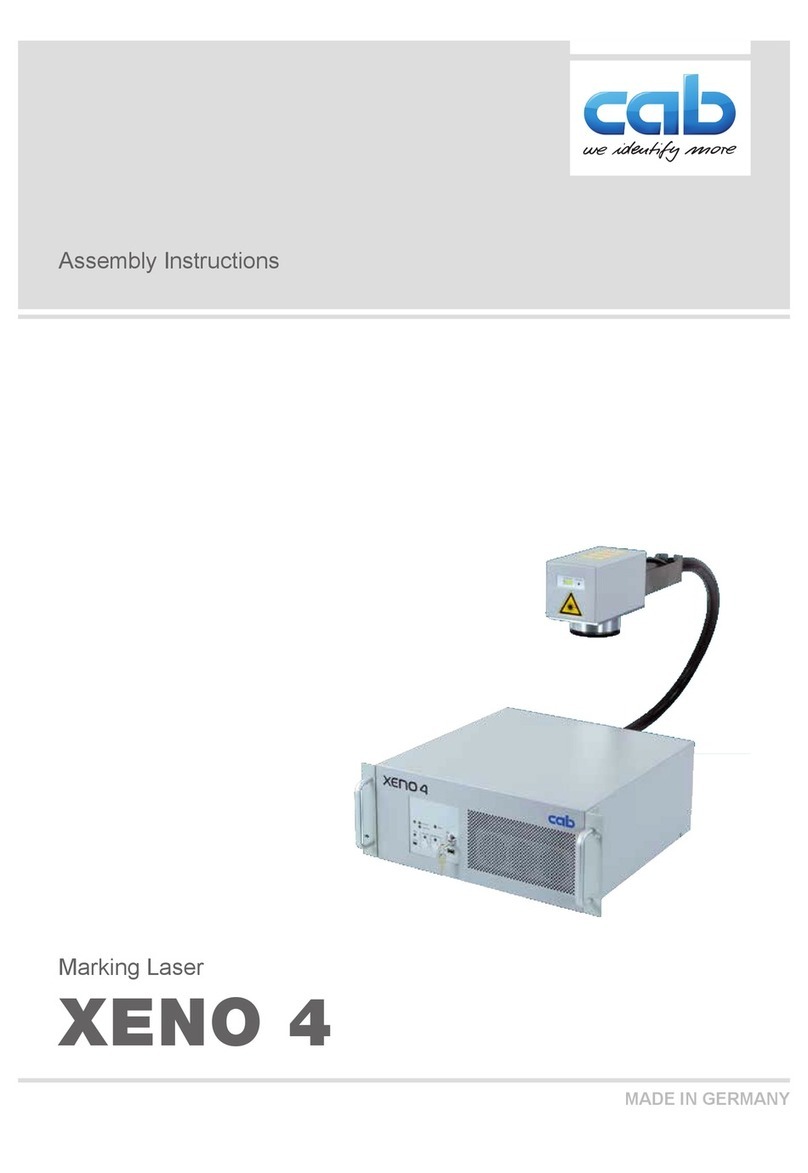
CAB
CAB XENO 4 Assembly instructions
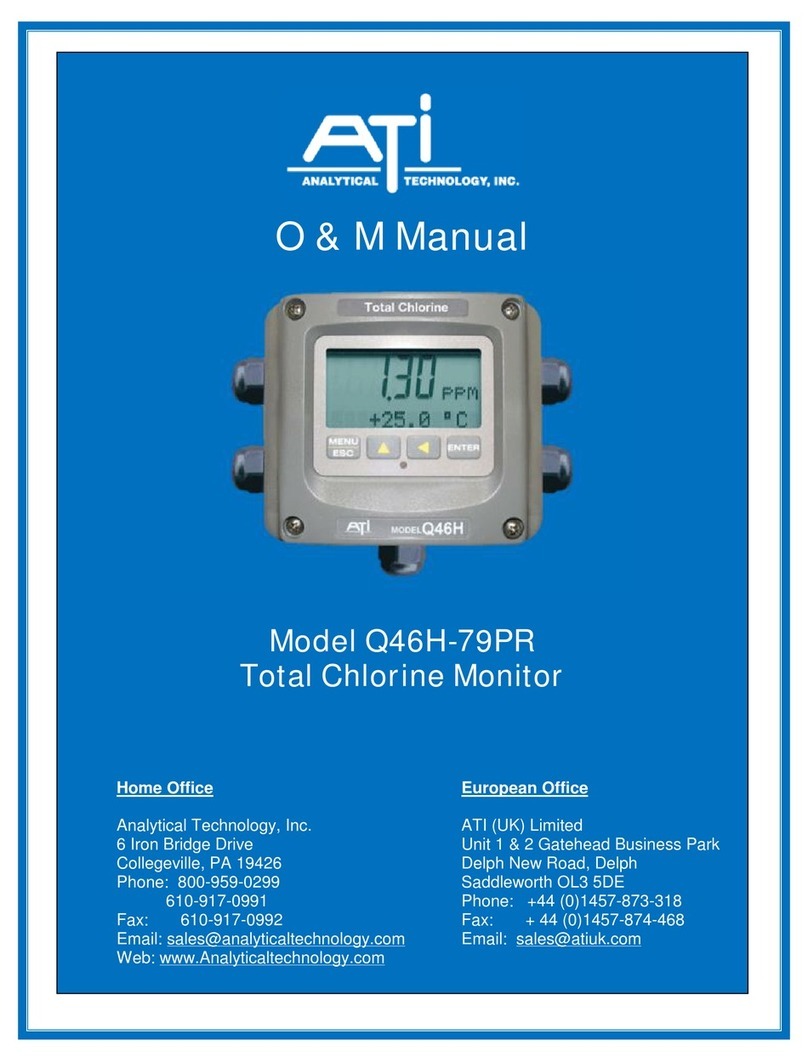
ATI Technologies
ATI Technologies Q46H/79PR O & M Manual
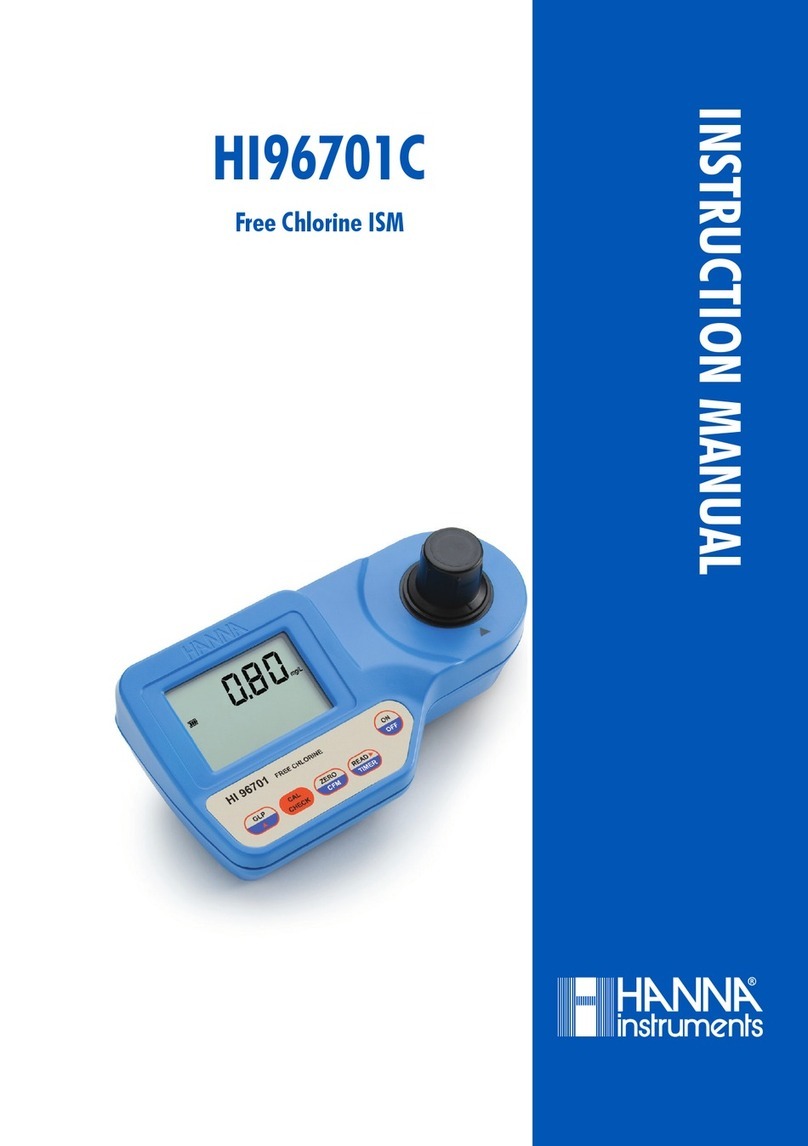
Hanna Instruments
Hanna Instruments HI 96701C instruction manual
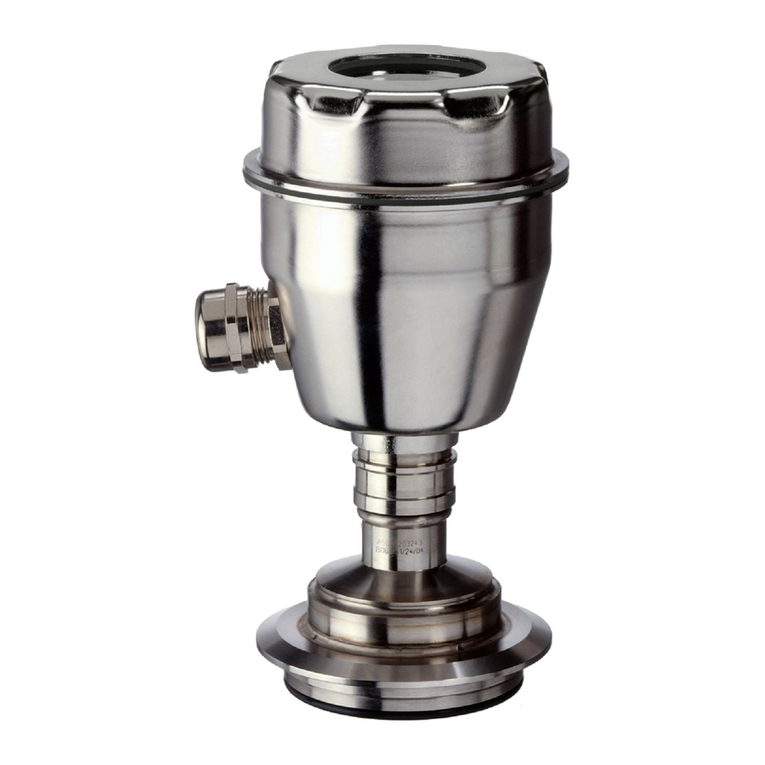
Siemens
Siemens SITRANS P300 quick start guide
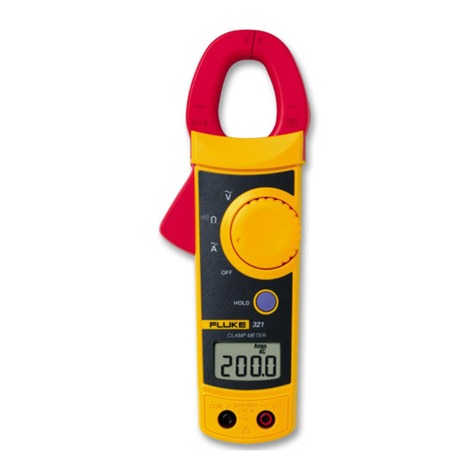
Fluke
Fluke 321 Instruction card
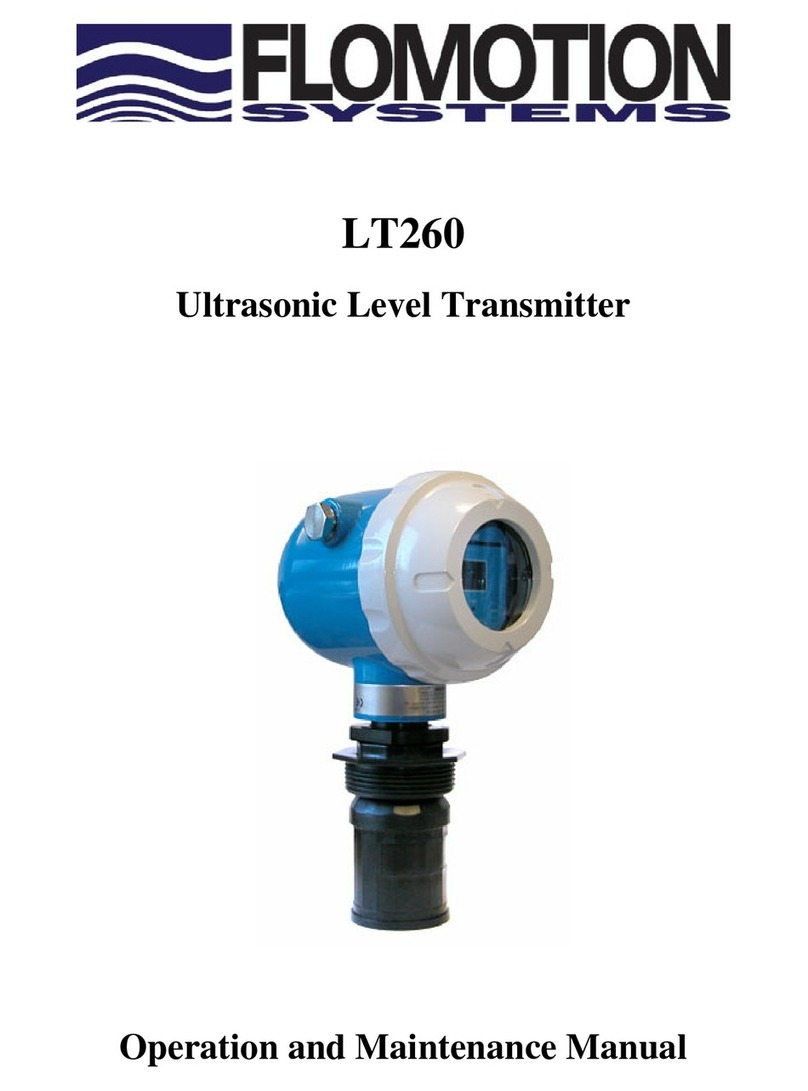
Flomotion Systems
Flomotion Systems LT260 Operation and maintenance manual
